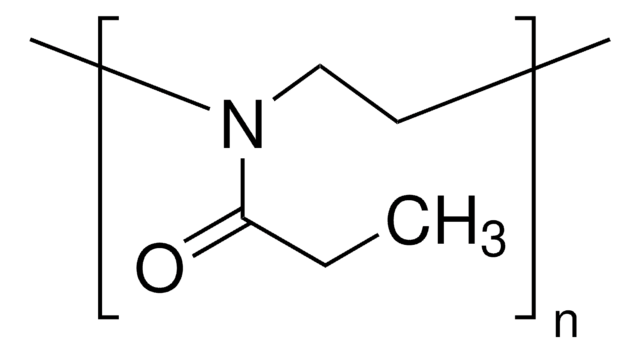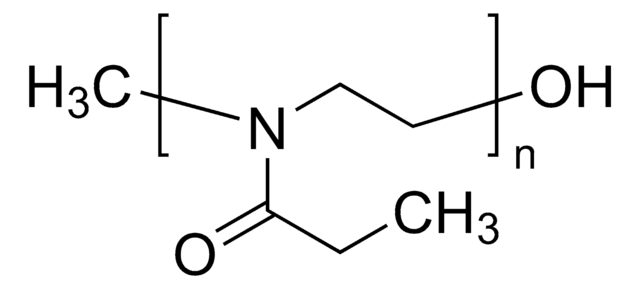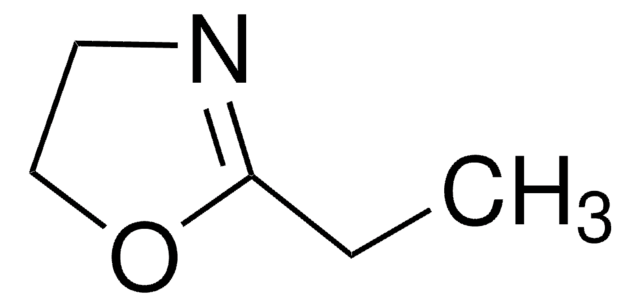741884
Poly(2-ethyl-2-oxazoline)
average Mn 20,000, PDI <1.4
About This Item
Produits recommandés
Vous recherchez des produits similaires ? Visite Guide de comparaison des produits
Application
Potential substitute for poly(vinyl alcohol) and poly(vinyl pyrrolidone). Sometimes it is used as an adhesion promoter in coatings. This is also sometimes used in heat sealing and remoistenable hot-melt adhesives. N-propionyl substituted linear polyethylenimine
Caractéristiques et avantages
Code de la classe de stockage
11 - Combustible Solids
Classe de danger pour l'eau (WGK)
WGK 3
Point d'éclair (°F)
Not applicable
Point d'éclair (°C)
Not applicable
Faites votre choix parmi les versions les plus récentes :
Déjà en possession de ce produit ?
Retrouvez la documentation relative aux produits que vous avez récemment achetés dans la Bibliothèque de documents.
Les clients ont également consulté
Articles
Poly(2-oxazoline)s (POx) can be viewed as conformational isomers of polypeptides. They are synthesized via living cationic ringopening polymerization (LCROP) of 2-oxazolines and were almost simultaneously discovered in 1966 by the groups of Litt, Tomalia, Fukui and Seeliger.
The introduction of polymers into the biomedical field has opened new avenues in tissue engineering, implant design, biosensing, and drug delivery.
Wide range of functional polymers for biomedical applications have been synthesized and structurally characterized. Several classes of polymers including biodegradable polymers, hydrophilic & amphiphilic polymers, and stimuli responsive polymers have been prepared using controlled and directed functionalization via "living" polymerization such as RAFT, ionic and ring opening polymerization. Selected polymers have been studied for their structure-properties relationship. "
Notre équipe de scientifiques dispose d'une expérience dans tous les secteurs de la recherche, notamment en sciences de la vie, science des matériaux, synthèse chimique, chromatographie, analyse et dans de nombreux autres domaines..
Contacter notre Service technique






